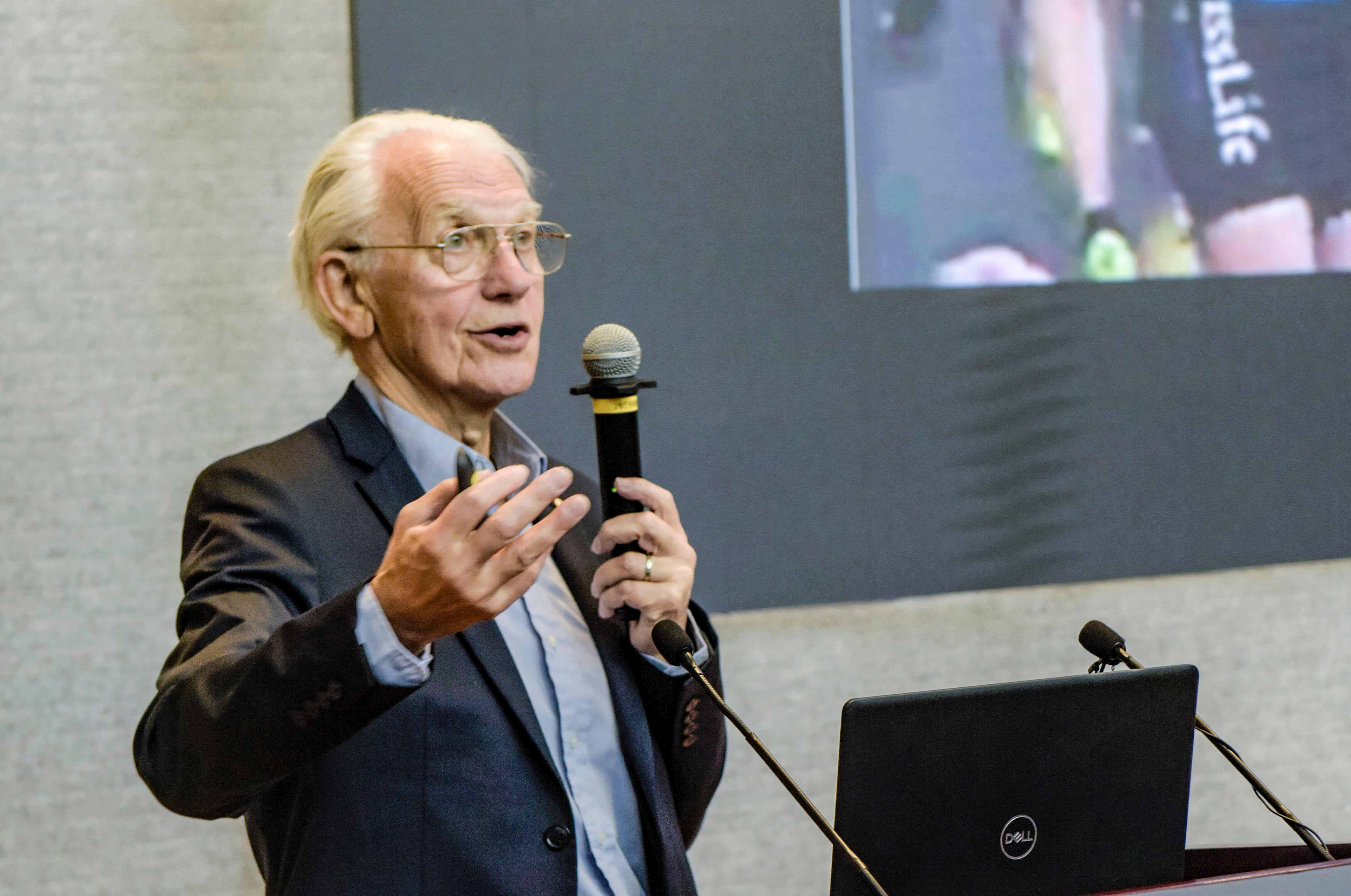On the morning of October 23, Shenzhen University (SZU) hosted the tenth session of its "Face-to-Face with Masters" lecture series in Hall 2 of the Huixing Building on Yuehai campus. Gérard Albert Mourou, the 2018 Nobel Prize winner in Physics and a distinguished member of several prestigious academies—including the Chinese Academy of Sciences, the National Academy of Engineering in the United States, the Russian Academy of Sciences, the Austrian Academy of Sciences, and the National Academy of Sciences of Italy—delivered a captivating lecture titled "Extreme Optics: Bridging Optics and Fundamental High-Energy Physics on the Journey Toward Zeptosecond (10⁻²¹ s) and Zettawatt (10²¹ W) Science." He elaborated on the development of extreme optics, discussing its evolution and cutting-edge applications.


Mourou is a renowned physicist in ultrafast and ultra-intense laser physics and a pioneer in electronic engineering and high-energy laser technology. He has advanced the application of lasers in medicine, industry, and cutting-edge basic science research, making numerous groundbreaking contributions. Mourou, in collaboration with Donna Strickland, developed chirped pulse amplification (CPA) technology, opening new avenues for the generation of ultra-high-power lasers. This breakthrough enhanced our understanding of laser-matter interactions in both relativistic and extreme relativistic physics, earning them the Nobel Prize.
During the lecture, Mourou provided an insightful overview of the development of extreme optics, starting with Professor Theodore Maiman's invention of the first laser in 1960 and progressing to today's significant breakthroughs in ultra-high-intensity lasers. He highlighted the evolution of this field and its innovative applications. Extreme optics, a cutting-edge discipline that explores optical phenomena under extreme physical conditions using ultrafast pulses and ultra-high-intensity lasers, has made impressive advancements.
In the interactive Q&A session that followed, Mourou engaged with faculty and students, addressing their questions about cutting-edge applications of extreme optics. Topics included medical applications of femtosecond lasers, their technological prospects and challenges in nuclear fusion and fission research, and their potential in metasurface. He encouraged students to embrace exploration in their scientific endeavors and emphasized the importance of supporting the development of female scientists. He advocated for greater female involvement in physics and engineering, highlighting that this would enhance diversity and innovation within the scientific community and foster the advancement of related disciplines.
The "Face-to-Face with Masters" lecture series has been successfully organized for ten sessions since its launch by SZU in October 2022. The series aims to align with the national strategy of "scientific and technological innovation, science- and education-driven national rejuvenation, and talent-based national development", as emphasized in the report from the 20thNational Congress of the Communist Party of China. This series covers a wide array of topics, including educational ethics and professionalism, talent development, party history, legal education, and mental health. It aspires to promote the holistic development of both the arts and sciences while fostering academic exchanges and moral education. This initiative has now evolved into a prominent platform for academic dialogue and a well-recognized lecture brand at the university.

